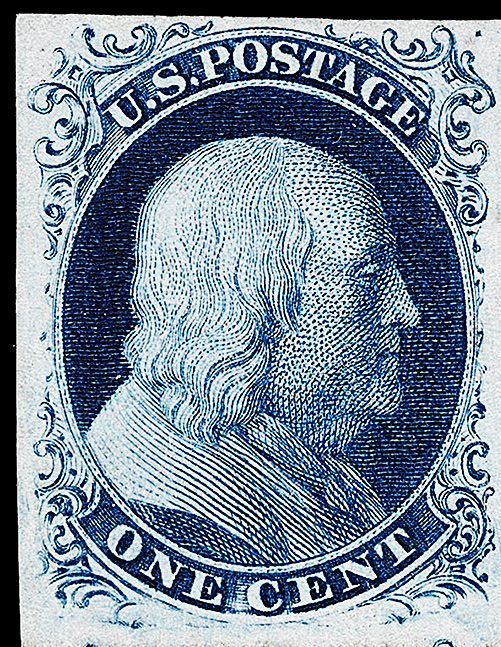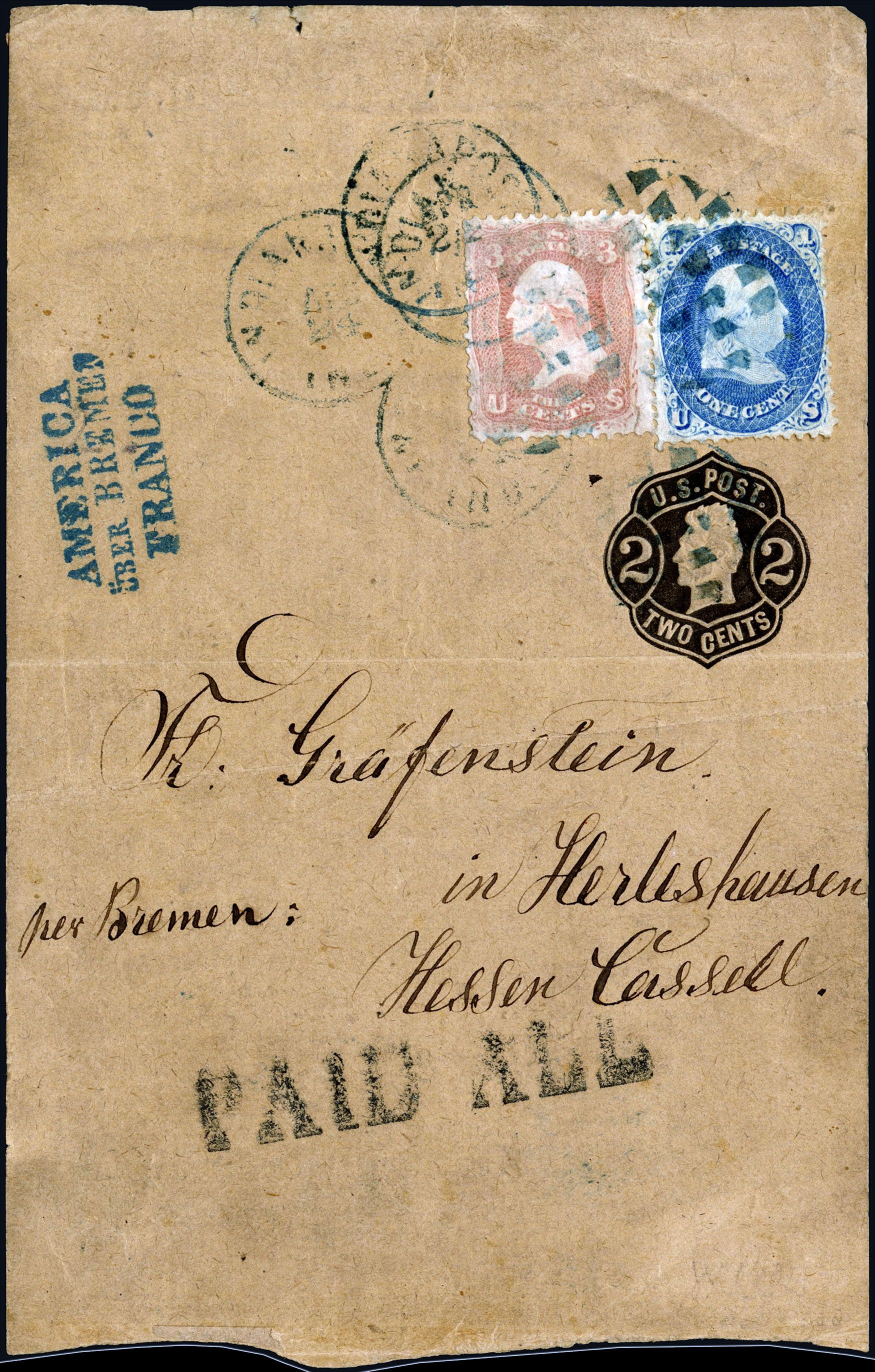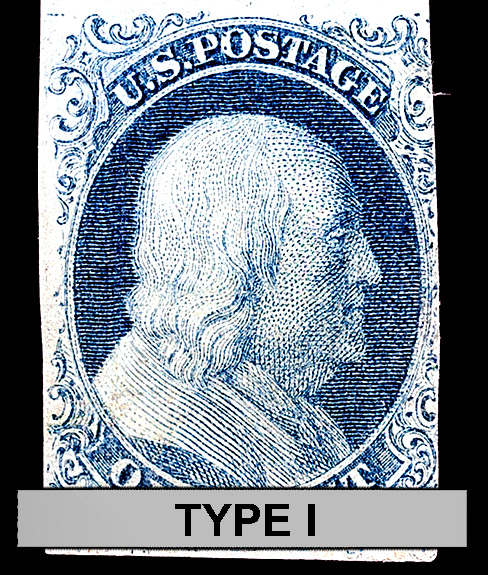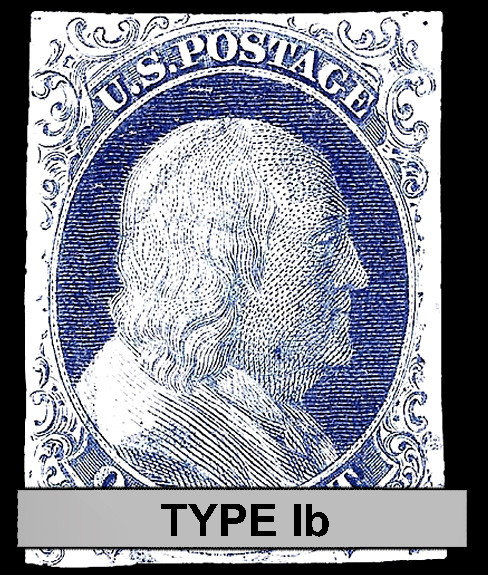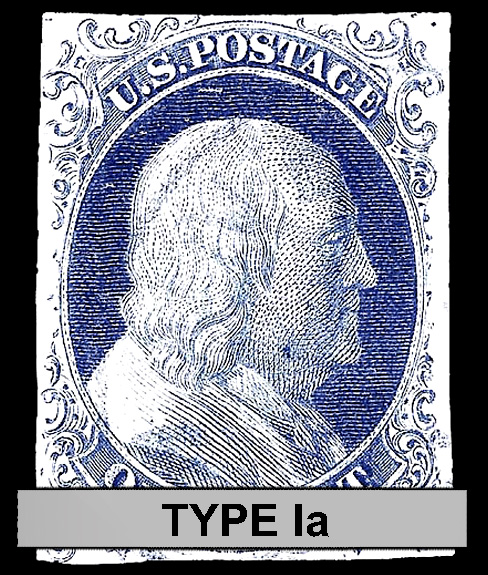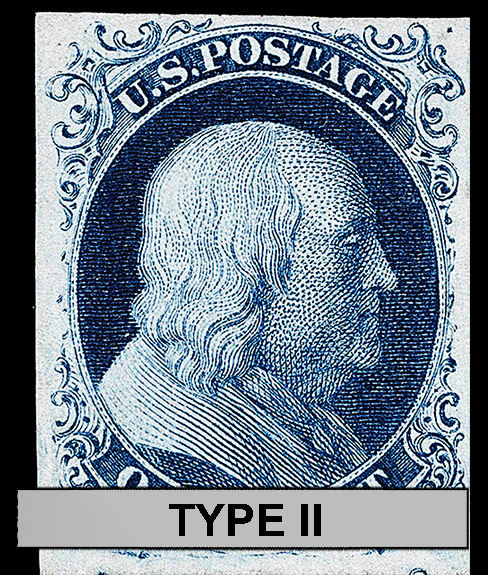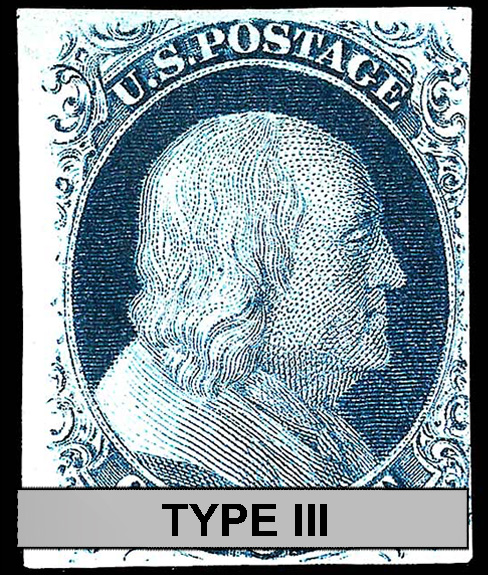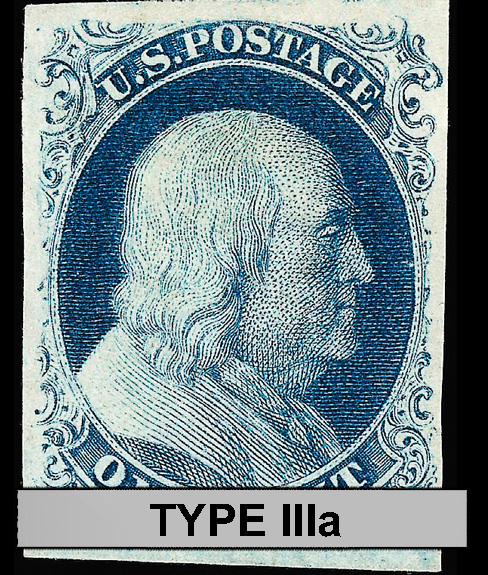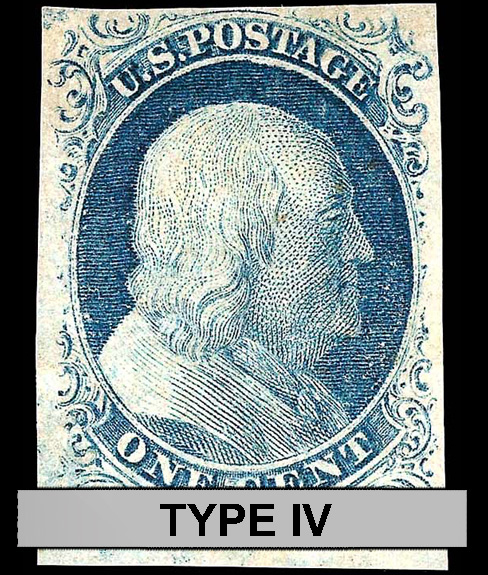Basic Info
1¢
Blue, dark blue
TYPE II
Printing Method: Die-to-relief-to-plate transfer process
Plates: I early and late, II, III and IV
Printer: Toppan, Carpenter, Casilier & Co.
Subject: Benjamin Franklin
Number issued: 12,300,000
Perforations: Imperforate
Watermark: Unwatermarked
Scott #: 7
Issued: July 1st, 1851
Value
Used
$35 - $60
No postmark with gum (MH)
$250 - $400
Full perfect gum, no postmark
no trace of stamp hinge mark (MNH)
$700 - $1,250
Inspiration for the Design
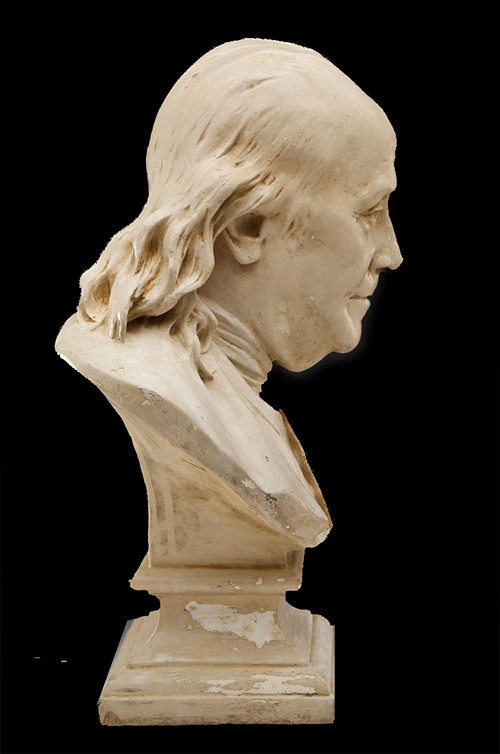
The vignette was based on Giuseppe Ceracchi's 1791 bust of Benjamin Franklin

A contemporary banknote printed by Toppan, Carpenter with the same vignette as #7
The Imprint

Along the side margin of the sheet can be found the Printers imprint along with the plate number
A pane of the 1¢ Franklin

There are two panes to a sheet of 200
The Chicago Perforation
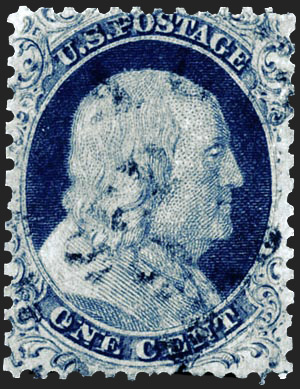
#7 Unofficial Chicago 12 ½ Hadley Gauge Perforations. Only 18 1¢ Chicago perfs survive. It occurs on the Type II and Type IV plates
Double Transfer

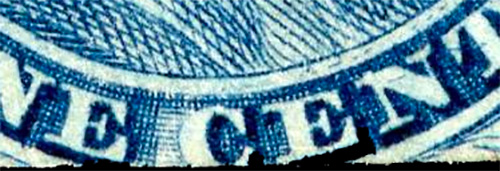
Position 10R4 with double transfer at bottom. The only double transfer on plate 4
The Precancel
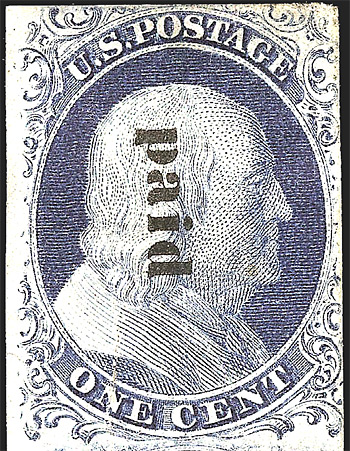
Issued by the Cleveland Post Office. Less than 10 copies survive.
Identifying #7
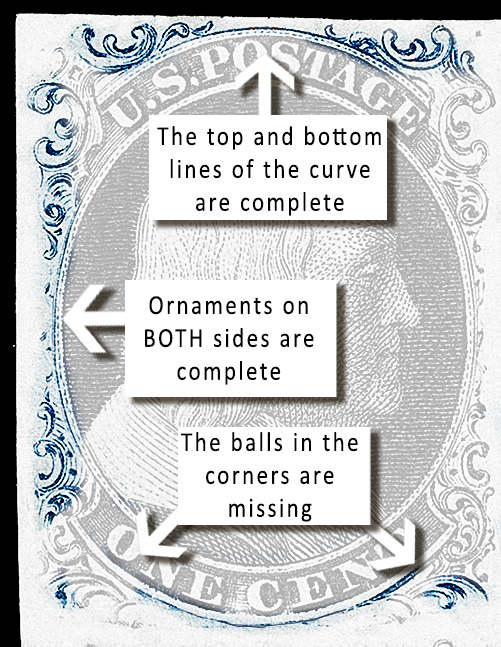
#7 is a Type II design. The design on the bottom and top are incomplete or jus the design on the bottom is incomplete in that the very tips of the plumes have been burnished off, the balls at the end of the plumes are missing, however the outer line of the frame (at the top and bottom) is always complete and not broken.
Notes on #7
1) This type II stamps top ornaments are so slightly shaved that it can be easily mistaken for the type I stamps where the ornaments are complete.
2) Plate III stamps are scarce, the plate was retired early.
3) A certificate is not really required on used #7 stamps unless it is one of the double transfer positions or it has some other unusual characteristic or is from plate III.
4) Plate II has numerous double transfers, one of which is inverted (71L IE) and one triple transfer with one of these being inverted (positions 81L IL and 91L IE). Position 7R IE has the most prominent double transfer, followed by 65R IE and then 22R IE.
5) The finest examples of type II can be found from the top row of plate IV.
How many plates does #7 appear on?
Four plates. On plate one it appears on both the early and late state, although in the latter it appears in only one position. Plate III examples are rare and are comprised of ONLY type II stamps.
The design of this early issue was too large to allow for the accommodation of the 200 subjects onto one plate. Therefore, each position had to have some amount of the design erased to allow enough room. These erasures accounted for the majority of the types.
How to read plate positions?
The first indicator is a number indicates its position on the plate, so 3RIE would have come from the third stamp on the plate. The number can range from 1 to 100, there being 100 stamps on each plate.
The second indicator is either the letter R or L, R indicates the stamp came from the right pane, L for the left pane. The stamp was printed in sheets of 200, each sheet was further divided into two panes of 100. Hence 3RIE would have come from the right pane as the second indicator in 3R1E is the letter R.
The third indicator can be from numbers I (1) to XII (12). This indicator is always shown in roman numerals. There were twelve plates, there are no stamps from plate VI (6) as it was destroyed before printing began (no doubt it was flawed). For example stamp 4RIL would have come from plate one (1).
The last or fourth indicator is either the letter E or L. The letter 'E' indicate an early state of the plate, the letter 'L' indicates the late state of the plate. This indicator only applies to PLATE I, as it is the only one that has an early and late plate. The early plate is the original plate. After 11 months the plate became worn and 199 of the 200 positions were recut. 113 positions on the plate had both top and bottom lines recut, 40 positions had only the top line recut, 8 positions had only the bottom line recut, 11 positions had a double recut at the bottom and 4 positions had a double recut at the to
How many plates were there?
There were twelve plates of the 1¢ Franklin made, plate six was never used, probably due to it being damaged in it's creation. Most of the plates were used for both the imperforate and perforated design. Some only produced one type or the other. For instance, plate 12 produced only perforated stamps and the early state of Plate 1 produced only imperforate stamps whilst plate I late (reconstruction) produced both imperforate and perforated stamps. Plate 4 was the last of the imperforate plates to be used.
The Big Crack

Known as the big crack. Plate II became cracked and several imperforate and perforated sheets were printed with this crack. The crack can be seen in Positions 2L, 12L, 13L 23L and 33L.
Caused by an integral flaw in the steel plate. Later printings show the crack extending to the fourth row.
Fakes
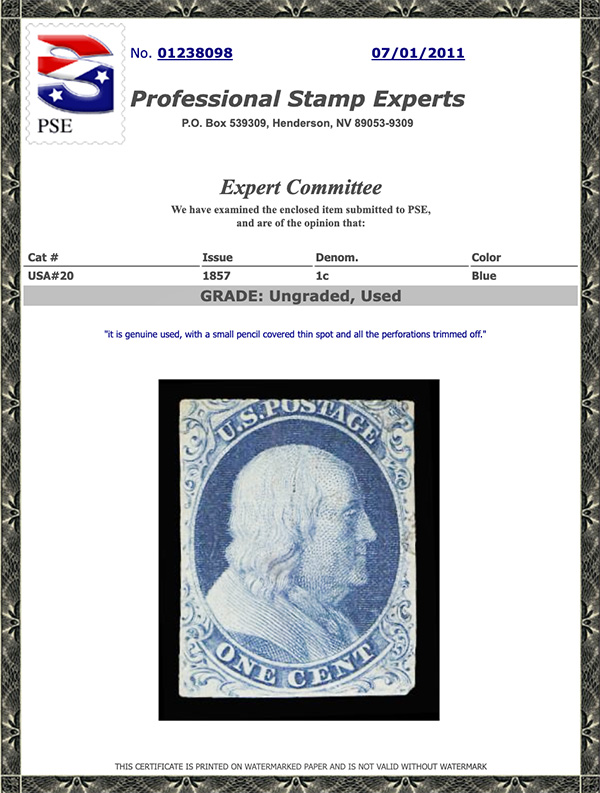
Narrow margins can be indicative of a type II #20 with its perforations trimmed off to appear as if it is a #17.
Notable Sales

7, 1851 1¢ Blue, Type II, position 2L2 (the "Big Crack"), three large margins and barely in at bottom, rich color and clear impression showing the distinctive crack along the right side, tied by "New-York May 13" date stamp to 1856 folded cover to Philadelphia.
Sold January 2023 for $500
Explore H.R. Harmer's Auctions
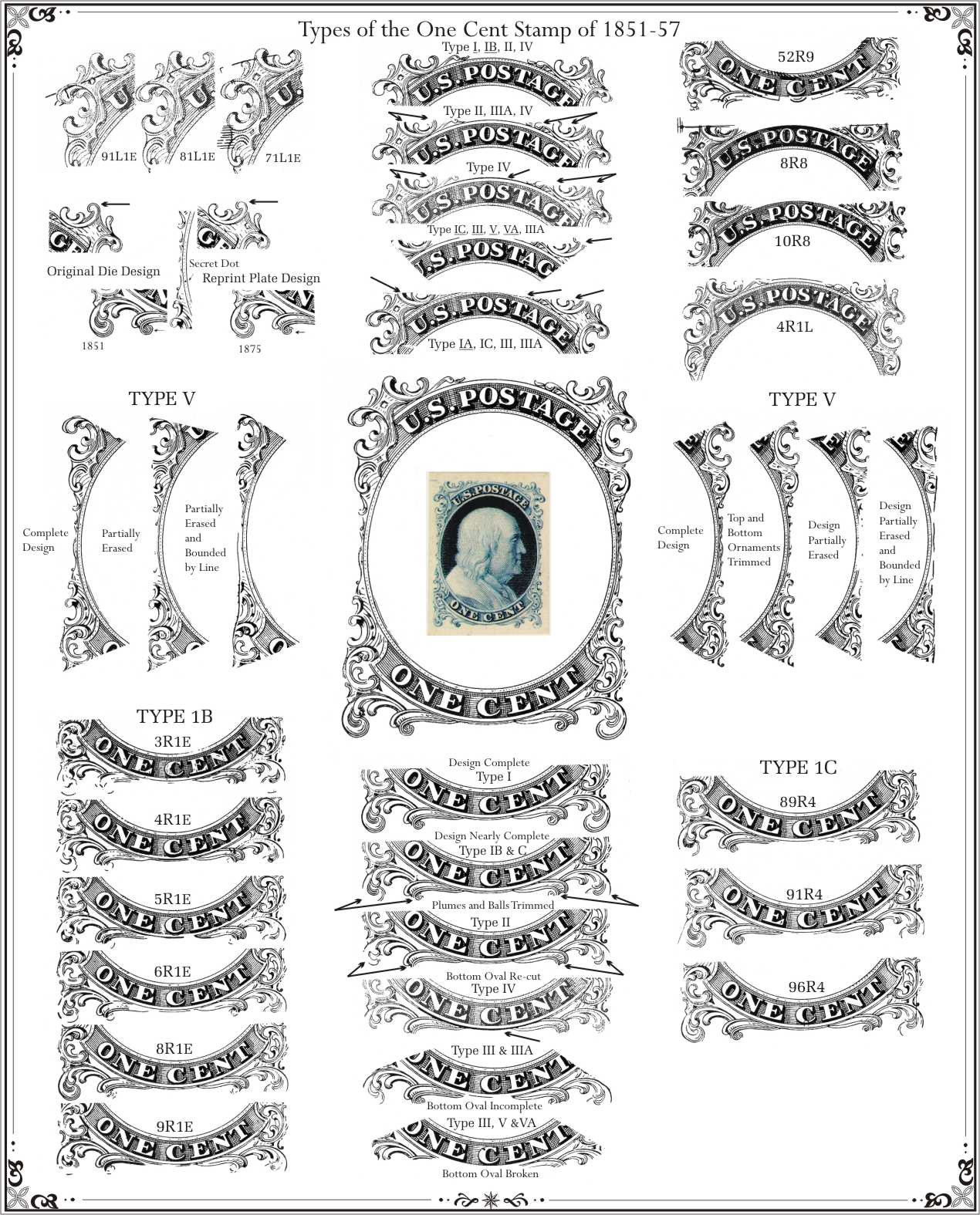
Chart supplied by courtesy of Chris Biason

